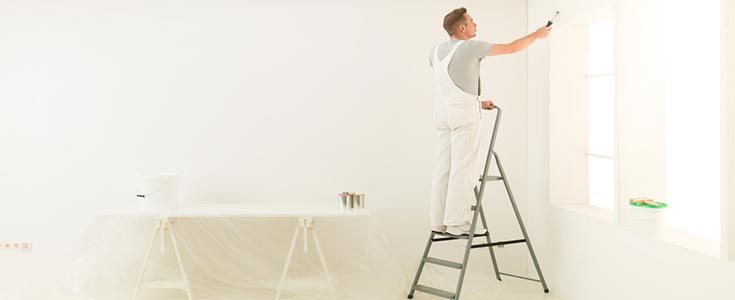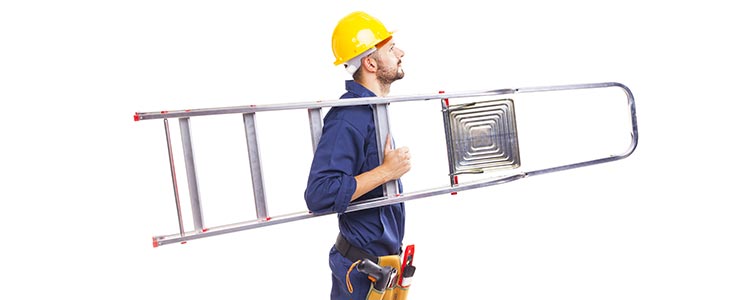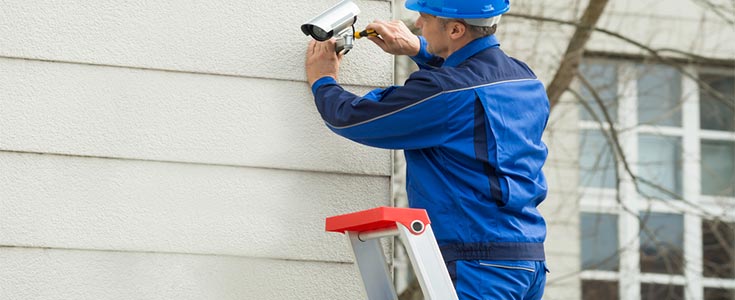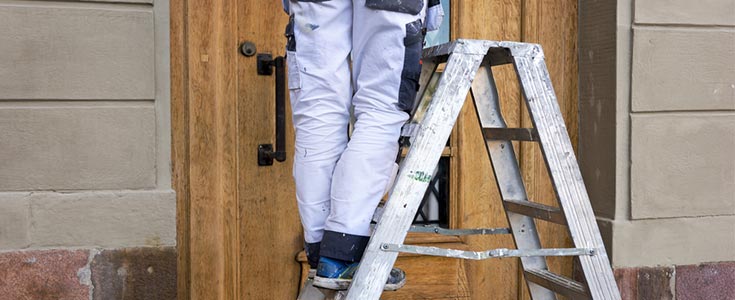We Answer Your Questions About Stepladders
05/06/2017
We pride ourselves in our peerless level of expertise here at Browns Ladders, garnered over more than sixty-five years in operation. Over that time, we’ve found that some questions from customers pop up more often than others. With that in mind, we’ve decided to address some of the most pressing ones in an FAQ. This week’s blog deals with your most commonly asked questions about stepladders.
When’s The Best Time To Use A Stepladder?

Generally, stepladders are best used for jobs that require a lot of stability, like painting or gardening. While you can theoretically use a rigid timber ladder for a job like painting a shed, for example, a stepladder gives you the extra stability and support you need, often as well as a handy platform to rest your tools or equipment (in this case your brushes). Meanwhile, snipping down some unwieldy branches in your back garden is another job that requires a particularly steady platform, and it’s in these circumstances that our garden ladders excel.
How Will I Know If I Need A Stepladder?

If you’re not sure whether or not you might need a stepladder, it’s fairly easy enough to work it out by looking at the relative heights involved. You should use one about a metre (3ft) shorter than the highest point you have to reach. This gives you the most stable platform to carry out the job – anything higher, and your stepladder might get prone to dangerous wobbles.
Remember to take the fine details into account; for example, if you’re working with electricity, an aluminium stepladder will be unsafe. A fibreglass stepladder should be your best bet instead.
Is A Stepladder Regarded As A Working Platform?

Very much so, according to the Work At Height Regulations 2005. A working platform is seen as simply a surface from which work can be carried out, which means that a stepladder firmly fits that definition. On a similar note, the platform on a stepladder is always counted as a tread, taking into account the fact that a fully grown adult can put their full weight down on it. If you’re doing this, though, remember that you should always keep 3 points of contact to guarantee your physical safety.
How Can I Make Sure My Stepladder Is Safe Before Using It?

There are a number of checks you can carry out before using your stepladder to minimise the risk of injury.
- Make sure your stepladder is fit for purpose
Check your ladder carefully for any defects, including loose screws and bolts, warped rails, or grease or other slippery substances on the treads. We’ve gone into more detail about the full checks you can perform in a previous blog
- Check the load rating
In other words, the total amount of weight that the ladder can support. It needs to be able to hold your weight in addition to the weight of the tools that you’ll be using.
- Open the spreaders or locking bars, and fully lock the braces into position
While you’re doing this, take a moment to check the feet of the ladder too. This stops the ladder from opening too far, and collapsing underneath you
- Place the stepladder at right angles to the work
Either the front or the back of the steps should be facing the work. Don’t place it at an awkward angle, as the best case scenario is that you’re forced to stretch to an uncomfortable position in order to get the job done. In the worst case scenario, you may even overbalance and tip the ladder over.
What Legislation Are Stepladders Affected By?
Step ladders are governed by several sets of regulations that standardise details such as their markings, dimensions, maximum loads and testing requirements. These regulations include:
- BS 1129:1990 (applies to timber ladders and stepladders)
- BS 2037:1994 (metal and aluminium ladders and stepladders)
- European EN131 (timber, aluminium steel and plastics ladders and stepladders)
Stepladders can be classed into three separate categories:
- Class 1: the highest rating in terms of strength and quality. These stepladders are used for heavy duty industrial applications
- EN131: These stepladders are used for light commercial work and heavy-duty DIY use
- Class III: These stepladders are used for occasional light domestic tasks, and aren’t suitable for commercial or trade work.
At Browns Ladders, we stock a huge range of access equipment stepladders, including both aluminium and fibreglass versions – so you can be sure that whatever the task, we’ve got the access equipment you need to get the job done. You can click here to browse our stepladders, or if you have any questions not addressed by this article just give us a call on 01282 615517.
Don’t forget to follow us on Twitter: @brownsladders